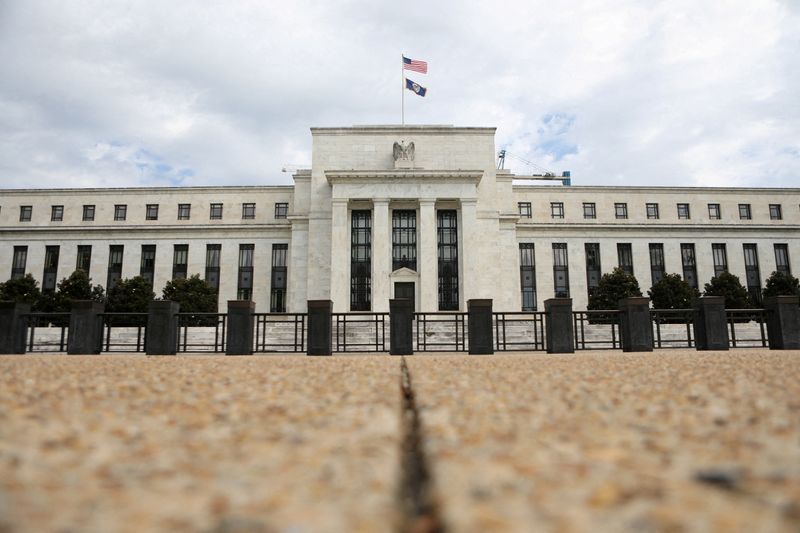(Reuters) - A look at the day ahead in U.S. and global markets from Mike Dolan
There's still a gnawing concern the Federal Reserve risks overkill in tightening monetary policy too much into a potentially deep domestic and global recession this winter.
Unnerved by August surveys showing the biggest contraction in U.S. service sector activity since the pandemic, markets wobbled on Tuesday.
Last minute hesitation about just how hawkish Fed chief Jerome Powell will sound at his Jackson Hole set piece on Friday saw interest rate markets and the dollar pull back from the latest peaks.
For all the intense speculation about how Europe's outsize energy shock will lead to much greater economic damage on eastern side of the Atlantic, all-industry business sentiment is still contracting at a faster rate in the United States than the euro zone or UK.
The prospect of a swingeing winter fuel crisis in Britain and the euro zone may yet change that picture, but the extent to which the United States remains immune from the backwash from that, as well as its own domestic inflation issue, is in question.
It was certainly enough to drag U.S. bond yields off recent highs and take the heat out of a resurgent dollar, where its main index - up 17% over the past year - balked at July's peaks on Tuesday and turned tail.
While no one thinks one month of surveys will be enough to change the Fed outlook on its own, it may give heart to those who think the U.S. economy is more vulnerable to another jumbo policy rate rise just as the Fed's balance sheet reduction and liquidity withdrawal go up a gear next month.
Goldman Sachs (NYSE:GS) said it expects Powell to restate on Friday the case for smaller rate rises and sees the Fed moving just 50 bps in September, followed by 25 bp increments in November and December. Futures markets are still priced half way between another 75bp hike and a smaller 50bp move.
Deutsche Bank (ETR:DBKGn) strategists reckon markets are already braced for a "very hawkish tone" from Powell, suggesting the risk to current pricing is that the actual speech is less dramatic.
Other the other hand, Minneapolis Fed chief Neel Kashkari, a voting Fed policymaker next year, appeared in no mood for easing up on Tuesday and said policy rates should go up another 2 percentage points to more than 4% through 2023.
All of which reinforces a mood of hesitation and indecision in markets. U.S. stock futures are flat going into the open - as are the main European indices. Asia bourses underperformed earlier, weighed down by higher crude oil prices and talk of OPEC cuts and China's ongoing drought and power shortages weighing.
Data and corporate calendars are thin on Wall St on Wednesday, with Zoom Video Communications stealing the show on Tuesday with a near 17% tumbled as the former "stay-at-home" stock darling cut its annual profit and revenue forecasts
Key developments that should provide more direction to U.S. markets later on Wednesday:
* U.S. July durable goods orders, capital goods orders, pending home sales * Earnings: Royal Bank of Canada, Salesforce
* U.S. Treasury auctions 5 year notes

Graphic: US vs euro zone PMIs https://fingfx.thomsonreuters.com/gfx/mkt/xmpjomwabvr/One.PNG
Graphic: US dollar net longs https://fingfx.thomsonreuters.com/gfx/mkt/zjpqkblrypx/U.S.%20dollar%20net%20longs.PNG
(By Mike Dolan; Editing by Toby Chopra mike.dolan@thomsonreuters.com. Twitter (NYSE:TWTR): @reutersMikeD)